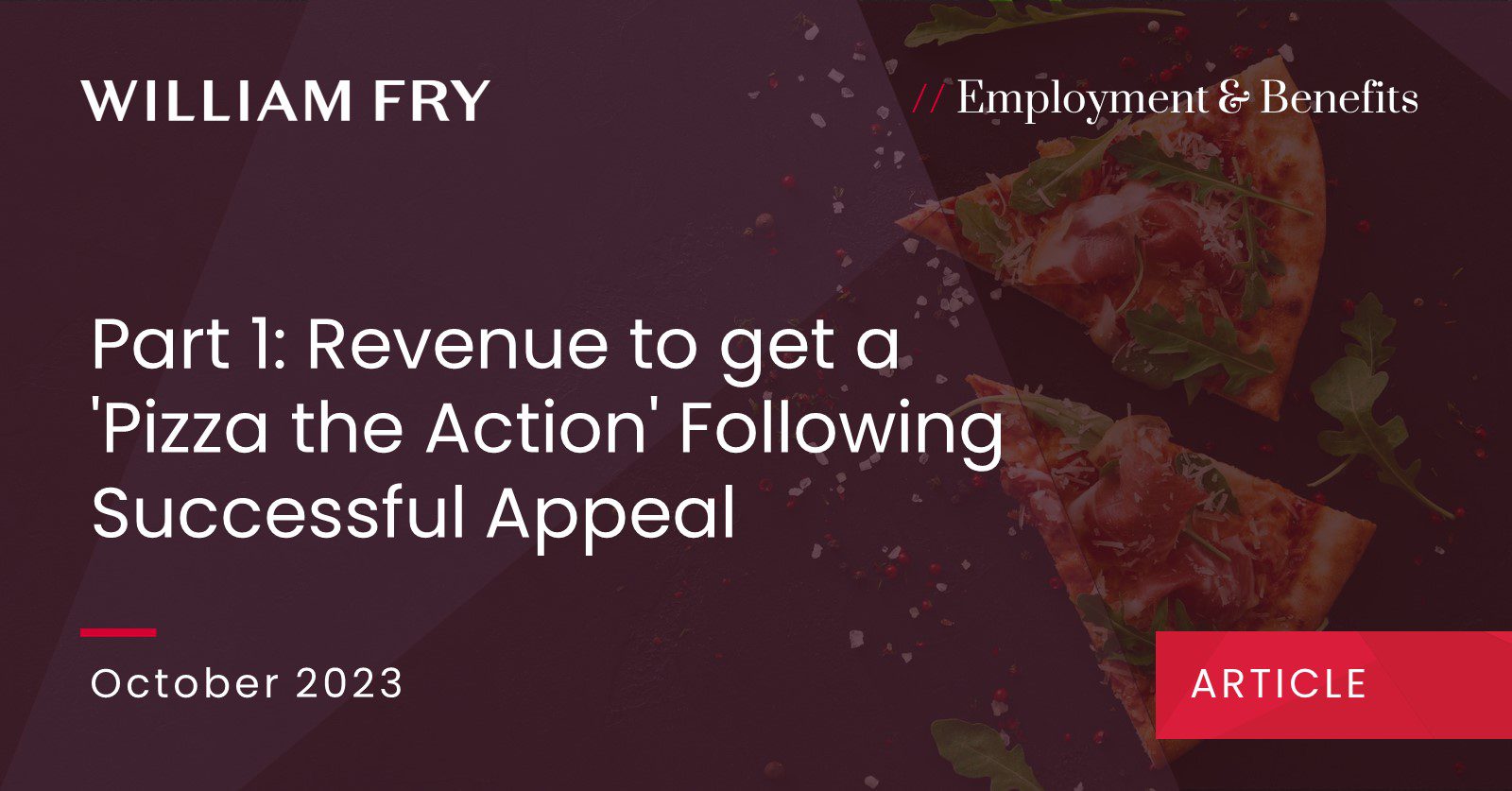On 20 October 2023, the Supreme Court delivered its unanimous judgement in The Revenue Commissioners v Karshan Midlands Ltd t/a Dominos Pizza [2023] IESC 24, holding that pizza delivery drivers were to be treated as employees and not independent contractors for the purpose of the Taxes Consolidation Act 1997 (the Act).
Employment status
The distinction between those working as employees under a contract of service, and those working as independent contractors under a contract for service is central to the application of employment, tax, and social security legislation. The line between the two has become increasingly blurred, particularly in the context of the ‘gig economy’ where workers often find themselves engaged in work that is non-continuous, occasional, or intermittent, and where there is no ongoing obligation on one party to provide work and on the other to accept it.
The dispute
The dispute before the Courts arose between the respondent, Karshan Limited (Karshan), and the appellant, the Revenue Commissioners (Revenue) over the correct tax treatment of the earnings of workers engaged by Karshan as delivery drivers.
Karshan argued that delivery drivers were independent contractors engaged under a contract for service and should be taxed under Schedule D of the Act. Revenue argued these workers were in fact employees engaged under a contract of service and were PAYE employees for the purposes of the Act.
The High Court
Karshan initially brought this case to the High Court as an appeal against a finding of the Tax Appeals Commission (TAC) that the delivery drivers were to be treated as employees for tax purposes.
The High Court upheld the decision of the TAC following an examination of four key issues, namely:
- mutuality of obligation;
- substitution;
- integration; and
- contractual terms.
You can read more about the High Court’s determination in our article here.
The Court of Appeal
Karshan appealed the finding of the High Court to the Court of Appeal (CoA), who overturned the High Court’s decision on a 2-1 majority.
The CoA focused on the concept of ‘mutuality of obligation’ as an essential component of a contract of employment. This means that there must be a mutual obligation on the employer to provide work and a corresponding obligation on the employee to perform this work.
The CoA determined that the TAC had erred in finding that there was mutuality of obligation in the contracts because each driver had signed an individual contract with Karshan.
The CoA held that there was no mutuality of obligation as, even where individual contracts were entered into with each driver, mutuality of obligation must be ongoing and exist throughout the entire rostered period. As there was no obligation on a delivery driver to attend shifts for which they had been rostered, and no sanction should they fail to attend, the CoA concluded there was no mutuality of obligation. As there was no mutuality of obligation, the delivery drivers were deemed to be independent contractors and should be taxed accordingly.
The Supreme Court
Revenue appealed the CoA’s findings to the Supreme Court.
The appeal centered on whether or not mutuality of obligation is an essential component in establishing the existence of an employment relationship.
Karshan put forward a theory of mutuality based on four core elements:
- The mutual commitments in question had to present some type of continuity;
- They have to have a forward-looking element i.e., extend into the future;
- There must be an obligation on the employer to provide work; and
- There had to be an obligation on the employee to perform the work.
The Supreme Court concluded that it was not an essential condition of a contract of employment that it imposed mutuality of obligation in the manner described by Karshan.
In his judgment for the unanimous Supreme Court, Murray J stated that the concept of mutuality of obligation has been transformed through overuse and over-analysis to being presented as the ‘defining feature’ of a contract of employment. It should simply describe the consideration that has to exist before a contract is ‘capable’ of being a contract of employment, rather than being a determinative feature of such contract.
Instead of focusing on mutuality of obligation, whether a contract is one of service or for service should instead be resolved by having regard to established case law and the following five questions:
- Does the contract involve the exchange of wages or other remuneration for work?
- If so, is the agreement one pursuant to which the worker is agreeing to provide their own services, and not those of a third party, to the employer?
- If so, does the employer exercise sufficient control over the worker to render the agreement one that is capable of being an employment agreement?
- If these three requirements are met, the decision maker must then determine whether the terms of the contract between the employer and worker, interpreted in the light of the admissible factual matrix and having regard to the working arrangements between the parties as disclosed by the evidence, are consistent with a contract of employment, or with some other form of contract having regard, in particular, to whether the arrangements point to the putative employee working for themselves or the putative employer.
- Finally, it should be determined whether there is anything in the particular legislative regime under consideration that requires the court to adjust or supplement any of the foregoing.
Considering the above questions, the Supreme Court held that the TAC was entitled to conclude that the delivery drivers were employees for the purposes of the Act.
Although some features of the drivers’ activities were consistent with those of independent contractors, having considered the broad factual matrix, in particular, the evidence of close control exercised by Karshan over the drivers, the preponderance of the evidence indicated that the drivers were carrying on Karshan’s business and not their own. The drivers were therefore employees of Karshan.
Conclusion
In the modern gig economy, the line between employees and independent contractors is often blurred. There may be significant employment law and tax consequences for incorrectly classifying the contractual relationship between an entity and its workers.
Anyone engaging workers in Ireland should carefully consider the contractual arrangements in place in light of the 5 questions set out by Murray J above.
In Part 2 of this series, we examine these 5 questions in more detail and will discuss how the Supreme Court applied these questions to the facts of this case.
For more information, please contact Catherine O’Flynn, Nuala Clayton or your usual William Fry contact.
Contributed by Elaine Egan


